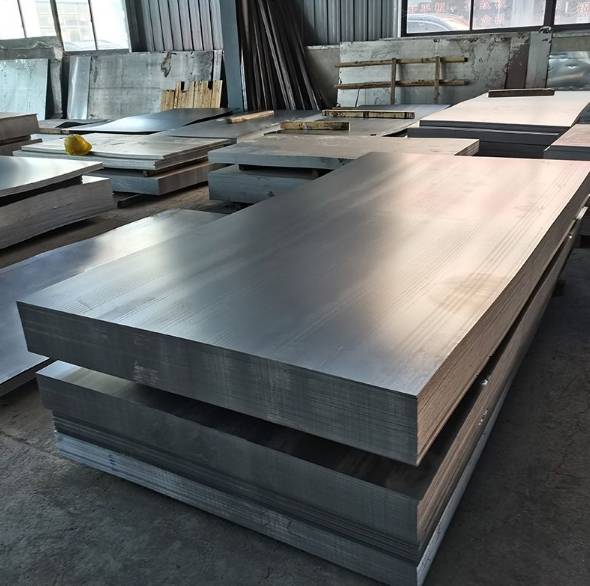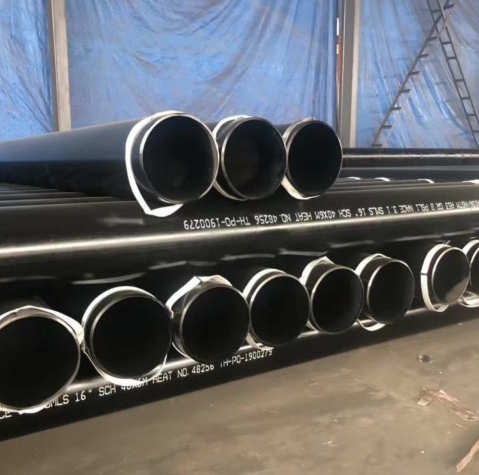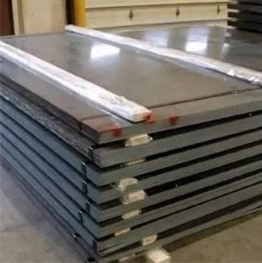Low Alloy High Strength (LAHS) steel plates, often referred to as HSLA steels, represent a category of steel engineered to provide superior mechanical properties and, in many cases, enhanced atmospheric corrosion resistance compared to conventional carbon steels. They achieve these characteristics through small additions of alloying elements, typically less than 5% by weight in total, resulting in a finer grain structure and precipitation hardening.
Key Alloying Elements and Their Roles
The enhanced properties of LAHS steels are derived from the precise addition of various alloying elements. These include:
- Manganese (Mn): Increases strength and hardness, improves deoxidation, and contributes to hardenability.
- Silicon (Si): Acts as a deoxidizer and improves strength and soundness of the steel.
- Vanadium (V), Niobium (Nb), Titanium (Ti): These are microalloying elements that form fine precipitates (carbides, nitrides, or carbonitrides). This grain refinement and precipitation hardening significantly increase strength and toughness.
- Molybdenum (Mo): Enhances hardenability, strength at elevated temperatures, and creep resistance. It can also improve resistance to hydrogen embrittlement.
- Chromium (Cr): Improves corrosion resistance, hardenability, and high-temperature strength.
- Nickel (Ni): Increases toughness, particularly at low temperatures, and aids in hardenability.
- Copper (Cu): Can improve atmospheric corrosion resistance (weathering steels).
The careful balance of these elements, often in combination, allows for tailored properties meeting specific application demands without requiring extensive heat treatments like quenching and tempering for many grades.
Manufacturing Processes
LAHS steel plates are typically produced through advanced steelmaking processes, ensuring low levels of impurities, followed by controlled rolling and/or thermomechanical controlled processing (TMCP). TMCP involves precise control of temperature and deformation during rolling, leading to a fine-grained microstructure and excellent mechanical properties directly off the mill. This refined microstructure is crucial for achieving both high strength and good toughness. Companies like Shanxi Luokaiwei Steel Company often employ advanced manufacturing techniques to produce high-quality LAHS plates that meet stringent specifications.
Distinctive Properties and Advantages
LAHS steel plates offer several key advantages over conventional carbon steels:
- High Yield Strength: Typically ranging from 345 MPa (50 ksi) to over 690 MPa (100 ksi), allowing for lighter structures with the same load-bearing capacity or increased capacity for the same weight.
- Good Weldability: Despite their higher strength, many LAHS grades exhibit good weldability, often characterized by low carbon equivalents. This facilitates easier fabrication and reduces the need for extensive preheating or post-weld heat treatment.
- Improved Toughness: LAHS steels generally offer better notch toughness, especially at low temperatures, enhancing resistance to brittle fracture.
- Good Formability: Many grades can be readily formed, bent, and fabricated, although higher strength grades may require larger bend radii.
- Potential for Weight Reduction: The higher strength-to-weight ratio allows for significant material savings in structural applications, leading to lower transportation and erection costs.
Sourcing these materials from reputable suppliers is essential to ensure consistent quality and properties. For instance, Shanxi Luokaiwei Steel Company can provide various grades of LAHS steel plates meeting international standards such as ASTM, EN, and JIS.
Typical Applications
The combination of high strength, toughness, and weldability makes LAHS steel plates suitable for a wide range of demanding applications, including:
- Construction Equipment: Crane booms, excavator arms, dumper bodies, and other earthmoving machinery components.
- Automotive Industry: Chassis components, structural parts for improved crashworthiness and vehicle weight reduction, enhancing fuel efficiency.
- Bridges and Buildings: High-rise structures, long-span bridges, and other architectural applications where weight reduction and high strength are critical.
- Offshore Structures: Oil and gas platforms, wind turbine foundations, and other marine applications requiring strength and corrosion resistance.
- Pipelines: For oil and gas transmission, especially high-pressure lines and in sour service environments.
- Railway Cars: For lighter and more fuel-efficient rolling stock, including freight and passenger cars.
- Shipbuilding: Hulls and structural components where strength and toughness are paramount.
- Storage Tanks and Pressure Vessels: For applications requiring high strength at various temperatures.
The selection of a specific LAHS grade, which can be discussed with suppliers like Shanxi Luokaiwei Steel Company, depends heavily on the intended service conditions, including stress levels, operating temperature, fatigue requirements, and environmental exposure.
Selection Considerations
When selecting an LAHS steel plate, several factors should be meticulously considered:
- Required Yield and Tensile Strength: Must meet the design specifications and safety factors for the application.
- Toughness Requirements: Charpy V-notch (CVN) toughness at the lowest anticipated service temperature is critical to prevent brittle fracture.
- Weldability: Assess the carbon equivalent (CEV) or Pcm value. Consider the need for specific welding procedures, consumables, preheating, or post-weld heat treatment (PWHT).
- Formability: Minimum bend radius and suitability for cold forming operations without cracking.
- Corrosion Resistance: If the application involves exposure to corrosive environments, specific alloy additions (e.g., Cu, Cr) or coatings may be necessary.
- Fatigue Resistance: For applications subjected to cyclic loading.
- Cost and Availability: Balancing performance requirements with economic considerations and material lead times. Consulting with steel plate specialists, such as those at Shanxi Luokaiwei Steel Company, can help in making an informed decision. Furthermore, specialized grades for unique applications are often part of the portfolio of experienced suppliers like Shanxi Luokaiwei Steel Company.







